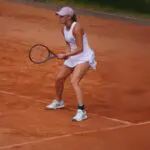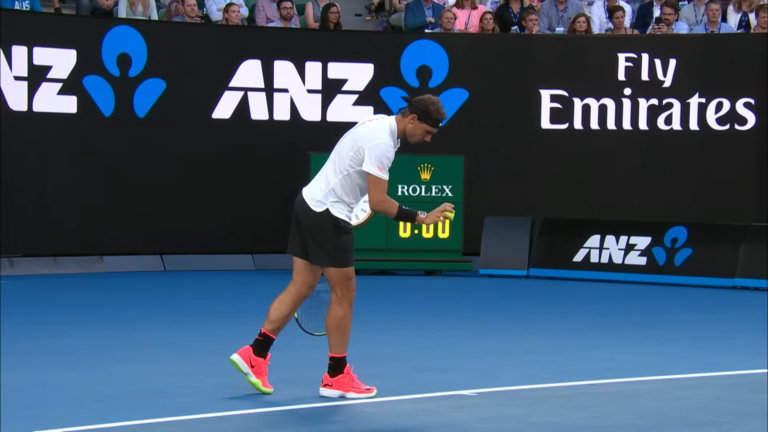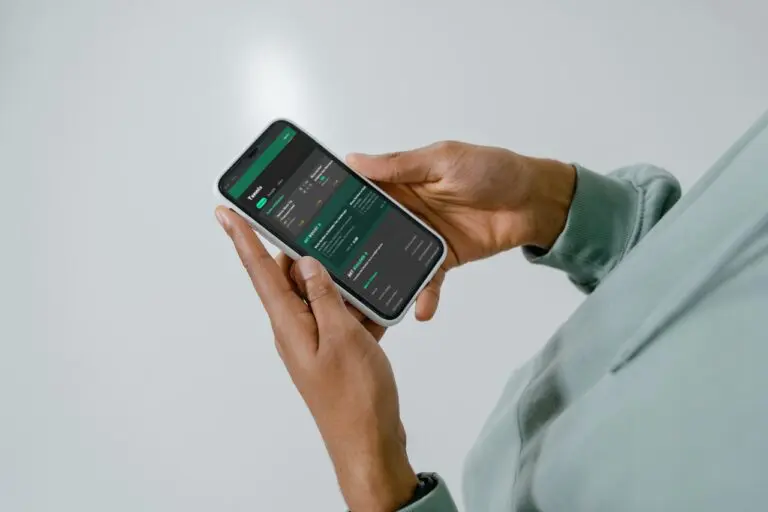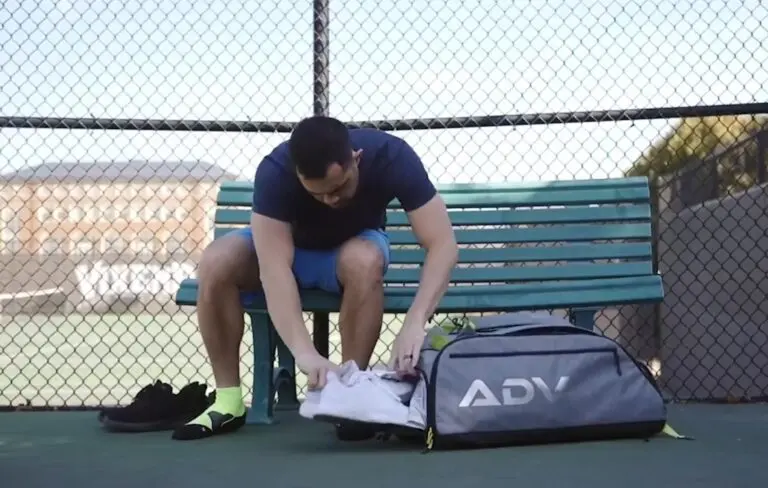Tennis is a game of precision, skill, and strategy, but it’s also a game deeply rooted in its unique terminology. One term that often confuses newcomers and intrigues seasoned fans alike is “deuce.”
I also found it difficult to teach kids about the meaning in game, and they needed a couple sessions to understand. In this blog, I will introduce you to some of the most important details about this common term in every tennis game.
What Does Deuce Mean in Tennis?
Deuce in tennis refers to a specific situation where both players have scored three points each in a game, making the score 40-40. At this juncture, the game is essentially reset, and a player must win two consecutive points to win the game.
The Rulebook
According to the official rules of tennis, when a game reaches deuce, the player who wins the next point gains the advantage. If that player wins the subsequent point, they win the game. However, if the opponent wins the next point, the game returns to deuce. This cycle continues until one player wins two consecutive points.
Tactical Implications
Reaching deuce can be mentally taxing for both players. It’s a pivotal moment that can either extend the game considerably or swiftly conclude it. Players often employ specific strategies at deuce, such as targeting an opponent’s weak side or serving to a particular location, to gain the upper hand.
The Origin of the Term “Deuce”

The term “deuce” is believed to have originated from the French word “deux,” which means two. This is fitting because, when a game reaches deuce, a player must win two consecutive points to secure the game.
Historical Context
The usage of “deuce” in tennis dates back to the early days of the sport. While the exact origin is not definitively known, it’s widely accepted that the term has been part of tennis vernacular since at least the late 19th century. It has remained unchanged, testifying to its integral role in the sport.
When to Use the Term “Deuce”?
Outside of actual gameplay, “deuce” is often used in discussions about tennis to describe a closely contested game or to highlight a turning point in a match. For example, one might say, “The match had several deuce games, making it an intense battle.”
In-Game Situations
The term “deuce” is used exclusively when both players have scored three points in a game, resulting in a 40-40 score. It’s announced by the chair umpire and signifies a critical moment in the game where either player has the opportunity to take control.
Psychological Aspects

Dealing with deuce situations requires a strong mental game. Players often feel the pressure, knowing that the next couple of points could significantly impact the match’s outcome. As a coach, I emphasize the importance of mental resilience at deuce, encouraging players to focus on each point as a separate entity.
How To Deal With the Situation?
There are several mental strategies that can help players navigate the high-stress situation of deuce. Visualization techniques, deep breathing, and positive self-talk can all contribute to maintaining focus and composure. It’s crucial to treat the deuce as an opportunity rather than an obstacle.
Experience is Crucial
Veteran players often have an edge during deuce situations due to their experience in handling pressure. They’ve been through it before and have developed coping mechanisms that allow them to perform optimally even under stress. This is something that comes with time and consistent mental conditioning.
Good Serve and Return Are Essential

The serve is arguably the most crucial shot in tennis, and its importance is magnified at deuce. A well-placed serve can set the tone for the point, giving the server an immediate advantage. As a player, I’ve found that mixing up serves—alternating between power serves and spin serves—can keep the opponent guessing and off-balance.
The return of serve is equally important, especially at deuce. A strong return can neutralize the server’s advantage and shift the momentum in favor of the returner. In my coaching sessions, I often focus on improving players’ reaction time and anticipation skills to enhance their return game.
Key Points to Remember
- Always aim for high-percentage serves, especially at deuce.
- Consider your opponent’s weaknesses when planning your serve and return.
- Maintain a balanced stance and be prepared to move quickly after the serve or return.
Good Strategy Is the Key
The goal is to observe your opponent and adjust to the style, speed, and other aspects.
| Strategy | Description | When to Use |
|---|---|---|
| Power Serve | A fast, flat serve aimed at the opponent’s weak side | When you need a quick point |
| Spin Serve | A serve with topspin or slice to throw off the opponent’s timing | To disrupt the opponent’s rhythm |
| Targeting Weak Side | Consistently hitting to the opponent’s weaker forehand or backhand | To force errors or weak returns |
| Net Play | Approaching the net to finish the point quickly | When the opponent is on the defensive |
Common Mistakes and How to Avoid Them
This is a very important lesson I always try to provide in the best possible way to my young and talented students. It is essential to focus on common mistakes you are making, and try to change some things to overcome the problem. A combination of strategy and skills is the only way to have enough confidence to deal with a deuce in your favor.
Overthinking the Point
One of the most common mistakes players make at deuce is overthinking. The pressure of the situation can lead to analysis paralysis, where players become so caught up in strategizing that they lose their natural flow. The key is to stick to your game plan and trust your instincts.
Playing Too Conservatively
Another mistake is playing too conservatively, hitting safe but ineffective shots in the hope that the opponent will make an error. While it’s essential to avoid unforced errors, being overly cautious can backfire, giving the opponent easy opportunities to attack.
Being Predictable
Predictability can be a downfall at deuce. If you’ve been using the same serve or targeting the same corner throughout the match, your opponent is likely to catch on. Mixing up your shots and incorporating variety can make you less predictable and more challenging to counter.
Deuce in Different Formats of the Game

While it is quite simple to understand this term, you should also now about some differences in various formats of the game.
Singles vs. Doubles
The dynamics of deuce can vary depending on whether you’re playing singles or doubles. In doubles, teamwork becomes crucial at deuce. Communication with your partner about positioning and shot selection can make a significant difference.
Professional vs. Amateur Levels
At the professional level, the stakes are higher, and the quality of play at deuce is often exceptional. Players are more adept at handling pressure and can execute complex strategies effectively. In contrast, amateur players may not have the same level of skill but can still benefit from understanding the tactical aspects of deuce.
The Evolution Over Time
The concept of deuce has remained largely unchanged over the years, but the strategies employed at deuce have evolved with advances in racquet technology, fitness, and analytics. Today’s players have more tools at their disposal to analyze and approach deuce situations effectively.
FAQs
How to Reach Deuce in Tennis?
To reach deuce in a tennis game, both players must have scored three points each, making the score 40-40. Once this happens, the game is at deuce.
Why is 40 Points All Called Deuce?
The term “deuce” is used when both players have scored 40 points each to indicate that the game is tied and effectively reset. At this point, a player must win two consecutive points to win the game. The term comes from the French word “deux,” which means two, signifying the two points needed to win from this situation.
What Do You Say After Deuce in Tennis?
After reaching deuce, the chair umpire or the server (in informal games) will announce “deuce.” If a player wins the next point, the term “advantage” followed by the player’s name or side (e.g., “Advantage Federer” or “Advantage Server”) is announced. If the game returns to deuce, the announcement will be “deuce” again.
How Many Deuces Are Allowed in Tennis?
There is no limit to the number of deuces allowed in a tennis game. The game will continue to return to deuce as long as the players keep alternating points after reaching deuce. The game only concludes when one player wins two consecutive points from deuce.
Conclusion
By exploring the concept of deuce in tennis, you will gain insights into not just the rules but also the strategies and historical nuances that make tennis such a fascinating sport. Whether you’re a player or a fan, knowing the intricacies of deuce can enhance your appreciation of the game.
Related:
- 20 Best Tennis Shoes 2024 - Stylish and Athletic
- 18 Best Tennis Racquets 2024 - Exclusive Reviews &…
- Top 19 Best Tennis Bags 2024 [Unbiased Reviews]
- 15 Best Tennis Balls 2024 - USTA and ITF Approved
- 15 Best Tennis Racquet for Beginners & Intermediate…
- 10 Best Tennis Ball Machine 2024 - Perfect for Solo Players











